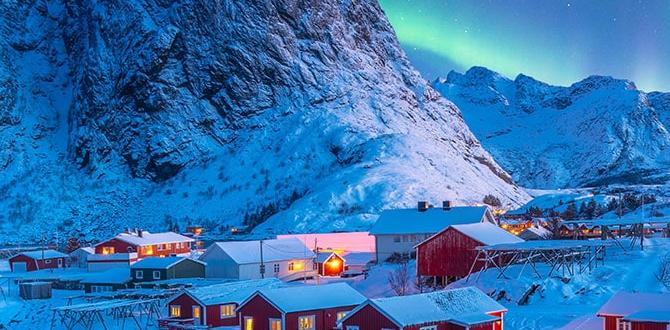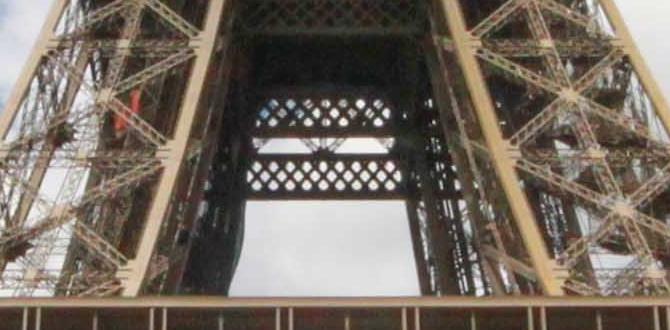Navigating the Atacama Desert without a private car is absolutely doable! This guide breaks down the public transport options, from buses to shared rides, making your journey comfortable and budget-friendly. We’ll cover everything you need to know to explore San Pedro de Atacama and its surroundings with confidence, ensuring you don’t miss a single breathtaking view.
Welcome to Journey Essentials! Planning a trip to the Atacama Desert can feel like a grand adventure, and it is! One of the most common concerns for travelers is how to get around this vast and stunning landscape, especially if you’re not renting a car.
It’s easy to feel a bit overwhelmed by the distances and the seemingly sparse options. But don’t worry, I’ve got you covered. We’ll demystify the public transport system, showing you how to travel smart, save money, and still reach all the iconic spots. Get ready to explore the driest desert on Earth with ease!
Understanding Your Atacama Desert Transport Options
The Atacama Desert is a place of extremes – the driest non-polar desert in the world, home to surreal landscapes, star-filled skies, and unique geological formations. While many imagine needing a 4×4 to conquer it, the reality for exploring key areas like San Pedro de Atacama and its immediate surroundings is quite manageable with public and shared transport.
The main hub, San Pedro de Atacama, is relatively compact and walking distance within the town itself. For accessing tours and further afield attractions, you have a few reliable strategies.
The primary modes of transport for travelers will involve a mix of:
- Inter-city buses
- Local shared vans (colectivos)
- Organized tour transportation
- Walking (within San Pedro)
Understanding which option is best for your itinerary and budget is key to a smooth trip. We’ll dive into each of these, equipping you with the knowledge to make informed decisions.
Getting to San Pedro de Atacama by Bus
San Pedro de Atacama doesn’t have its own airport. The closest major airport is in Calama (CJC). From Calama, you’ll need to take a bus or a shared transfer to San Pedro. This inter-city bus journey is a very common and economical way to reach the town.
Calama to San Pedro de Atacama Bus Services
Several reputable bus companies operate this route frequently throughout the day. It’s a relatively short journey, typically taking about 1.5 to 2 hours.
- Companies: Popular companies include Pullman Bus and Turbus.
- Frequency: Buses run every hour or so, especially during peak travel times.
- Booking: You can purchase tickets in advance online through their respective websites or buy them at the bus terminal in Calama. Booking ahead is recommended, especially during holidays.
- Cost: Prices are generally affordable, ranging from CLP 7,000 to CLP 12,000 (approximately $8-$14 USD) one way. Prices can fluctuate based on demand and booking time.
- Comfort: These are comfortable, long-distance buses with heating, reclining seats, and overhead storage for luggage.
Pro-Tip: When booking your flight into Calama, try to time it with bus departures. You can often find bus schedules that align well with flight arrival times. It’s also a good idea to check the official websites of the bus companies for the most up-to-date schedules and pricing.
Traveling from Other Major Cities
You can also take direct buses to San Pedro de Atacama from other Chilean cities, such as Santiago, Antofagasta, and Arica. These are longer journeys, often overnight.
- Santiago to San Pedro: This is a popular route, with buses departing from the main bus terminal (Terminal Alameda) in Santiago. The journey takes approximately 18-20 hours. This is a cost-effective alternative to flying if you have the time.
- Antofagasta to San Pedro: A shorter route than from Santiago, taking around 5-6 hours.
When considering these longer bus journeys, especially if you’re traveling with children or require extra comfort, consider packing essentials like travel pillows, blankets, snacks, and water. If you need to manage personal care needs during long journeys, discreet and comfortable solutions like adult diapers or child diapers can provide peace of mind for stress-free travel.
Navigating Within San Pedro de Atacama
Once you arrive in San Pedro de Atacama, the town itself is quite small and easily navigable on foot. Most hotels, hostels, restaurants, tour agencies, and shops are clustered around the main streets.
Walking Around Town
This is the most common and pleasant way to get around. The dirt roads are well-trodden, and the atmosphere is laid-back.
- Distance: The main tourist area is very compact, easily walkable within 15-20 minutes.
- Convenience: You can pop in and out of shops, book tours, and find places to eat without needing any transport.
- What to Bring: Comfortable walking shoes are a must, and always wear a hat and sunscreen due to the intense sun.
Renting Bicycles
For a bit more freedom and to explore slightly further afield within the immediate vicinity of town, renting a bicycle is a popular choice. Many agencies in San Pedro offer bike rentals.
- Rental Shops: Numerous shops are dotted along the main streets.
- Cost: Expect to pay around CLP 5,000-10,000 per day for a basic bike.
- Destinations: Biking is great for visiting nearby sites like the Pukará de Quitor (an ancient fortress) or the Aldea de Tulor (archaeological site), which are a few kilometers outside of town.
- Caution: Be mindful of the unpaved roads and the strong sun. Always carry plenty of water and wear protective gear.
Public Transport for Day Tours and Attractions
This is where most travelers will rely on organized transport. While you could theoretically reach some attractions with local buses, it’s often impractical due to infrequent schedules and the distances involved. The most common and recommended way to visit the region’s breathtaking natural wonders is through organized tours that include transportation.
Organized Tour Operators
San Pedro de Atacama is a hub for adventure tourism, and tour operators are a dime a dozen. They offer a wide range of excursions to popular sites.
- Popular Destinations: Moon Valley (Valle de la Luna), Death Valley (Valle de la Muerte), El Tatio Geysers, Rainbow Valley (Valle del Arcoiris), Altiplanic Lagoons (Lagunas Altiplánicas), Salar de Atacama (Atacama Salt Flat), and stargazing tours.
- What’s Included: Most tours include round-trip transportation from San Pedro in vans or small buses, a guide, and sometimes entrance fees. Always clarify what’s included when booking.
- Booking: You can book tours online in advance, but it’s often cheaper and more flexible to book them in person at one of the many agencies in town once you arrive. This allows you to compare prices and itineraries.
- Cost: Prices vary significantly based on the destination, duration, and group size. A half-day tour (like Moon Valley) might cost CLP 15,000-30,000, while a full-day trip (like El Tatio Geysers) could be CLP 30,000-60,000.
- Comfort & Safety: Tour operators are experienced in navigating the terrain and have vehicles suitable for desert conditions. They manage the logistics, allowing you to relax and enjoy the scenery.
Shared Vans and Colectivos for Specific Routes
Sometimes, for more direct routes to specific locations or if you’re traveling with a small group and want a slightly more independent feel than a full tour, shared vans (often called “colectivos” in Chile) can be an option. However, these are less common for tourist attractions compared to inter-city travel.
- Example: A common route where colectivos might be useful is between Calama and San Pedro if you miss a bus.
- Availability: For tourist attractions outside of San Pedro, organized tours are generally more practical and widely available than finding a dedicated colectivo service.
- Recommendation: For accessing most major tourist sites, sticking with organized tours is the most straightforward and officially recognized method.
Transport to Specific Atacama Attractions
Let’s look at how you’d typically reach some of the most famous spots.
Moon Valley (Valle de la Luna) & Death Valley (Valle de la Muerte)
These iconic landscapes are located about 10-15 km west of San Pedro.
- By Tour: This is the most popular and easiest way. Most agencies offer half-day tours to these valleys, often at sunset, which is spectacular.
- By Bicycle: It’s a challenging but rewarding bike ride, especially if you’re fit. Be prepared for heat and sandy patches.
- By Taxi/Private Transfer: You can hire a taxi from San Pedro, but it will be significantly more expensive than a tour.
El Tatio Geysers
Located about 90 km north of San Pedro, this high-altitude geyser field is a major attraction, best visited at sunrise.
- By Tour: Almost exclusively visited via organized tours. These tours depart very early (around 4-5 AM) to catch the geysers at their most active.
- Vehicle Type: Tours use sturdy vans or small buses that can handle the rough, unpaved roads and altitude.
- Altitude Warning: Be aware that El Tatio is at over 4,300 meters (14,000 feet). Acclimatization is crucial.
Altiplanic Lagoons (Miscanti and Miñiques) & Salar de Atacama
These stunning high-altitude lagoons and the vast salt flat are typically part of full-day tours.
- By Tour: Full-day tours are standard. They often combine several sites, including the Salar de Atacama, Chaxa Lagoon (for flamingos), and the Altiplanic Lagoons.
- Vehicle Type: Vans and buses are used. The Salar de Atacama is relatively flat and accessible. The roads to the Altiplanic Lagoons are higher and can be winding.
- Park Entrance Fees: Ensure you know if entrance fees to national reserves (where some lagoons are located) are included in your tour price.
Stargazing Tours
Due to the exceptionally clear skies, San Pedro is a prime location for astronomy.
- By Tour: These tours are highly recommended. Operators pick you up from your accommodation or a central point.
- Transport: You’ll be driven away from the town’s light pollution to an optimal viewing location.
- What to Expect: Tours usually include an astronomy talk, telescope viewing, and often hot drinks.
Budgeting for Atacama Transport
Understanding the costs involved will help you plan your finances.
Cost Breakdown Example (Per Person, Estimates)
This table gives you a rough idea of what to expect. Prices are in Chilean Pesos (CLP) and approximate USD.
| Service | Estimated Cost (CLP) | Estimated Cost (USD) | Notes |
|---|---|---|---|
| Bus: Calama Airport to San Pedro (one-way) | 7,000 – 12,000 | $8 – $14 | Standard bus service. |
| Bicycle Rental (full day) | 5,000 – 10,000 | $6 – $12 | For exploring around town. |
| Half-Day Tour (e.g., Moon Valley) | 15,000 – 30,000 | $18 – $36 | Includes transport & guide. Excludes park fees. |
| Full-Day Tour (e.g., El Tatio or Lagoons) | 30,000 – 60,000 | $36 – $72 | Includes transport & guide. Excludes park fees. |
| Stargazing Tour | 20,000 – 40,000 | $24 – $48 | Includes transport & astronomy talk. |
| Taxi: Calama Airport to San Pedro (one-way, shared) | ~40,000 – 60,000 | $48 – $72 | Can increase if no other passengers are found. |
Note: Exchange rates fluctuate. These USD conversions are approximate. Park entrance fees are often extra and can range from 5,000 to 15,000 CLP per person per site.
Tips for Saving Money on Transport
- Negotiate Tour Prices: Especially if booking several tours, you can often negotiate a small discount.
- Book in Person: Generally, booking tours and colectivos in San Pedro itself is cheaper than booking online in advance.
- Choose Group Tours: Opt for group tours over private hires for significant savings.
- Consider Bus Travel: If traveling from distant cities like Santiago, buses are much cheaper than flights.
Practical Tips for Atacama Travelers
To ensure your public transport experience in the Atacama Desert is as smooth as possible, keep these essentials in mind.
Stay Hydrated and Protected
The desert climate is harsh. Always carry water, even on short bus rides or walks around town. Sunscreen with a high SPF, a wide-brimmed hat, and sunglasses are non-negotiable.
Acclimatize to Altitude
Many popular attractions, like El Tatio Geysers and the Altiplanic Lagoons, are at high altitudes (over 4,000 meters). San Pedro itself is around 2,400 meters. Spend a day or two in San Pedro to acclimatize before attempting high-altitude excursions. Avoid strenuous activity, alcohol, and heavy meals on your first day at altitude. Coca leaf tea or mate can help some individuals. If you have pre-existing respiratory or cardiac conditions, consult your doctor before traveling to high altitudes.
Pack Smart
For bus travel, especially overnight or long-distance, pack a small bag with essentials:
- Comfortable travel pillow
- Warm layers of clothing (temperatures drop significantly at night)
- Snacks and reusable water bottle
- Entertainment (book, tablet)
- Any personal hygiene items, including discreet and comfortable travel aids like adult diapers or overnight child diapers if needed for peace of mind on long journeys.
Be Prepared for Unpaved Roads
Tour vehicles are equipped for this, but if you’re adventurous and biking or walking, expect dusty and uneven terrain.
Currency
The local currency is the Chilean Peso (CLP). While some tour agencies might accept USD, it’s best to have local currency. ATMs are available in San Pedro, but they can sometimes run out of cash, so it’s wise to have some on hand from Calama or your departure city.
Flexibility is Key
While this guide aims to be comprehensive, travel in remote areas can sometimes involve minor delays or changes to schedules. A flexible attitude will go a long way.
FAQs
Is it possible to visit the Atacama Desert without a car?
Absolutely! San Pedro de Atacama is very accessible by inter-city bus from Calama airport. Most popular attractions are best visited via organized tours that include transportation, making a car unnecessary for most travelers.




